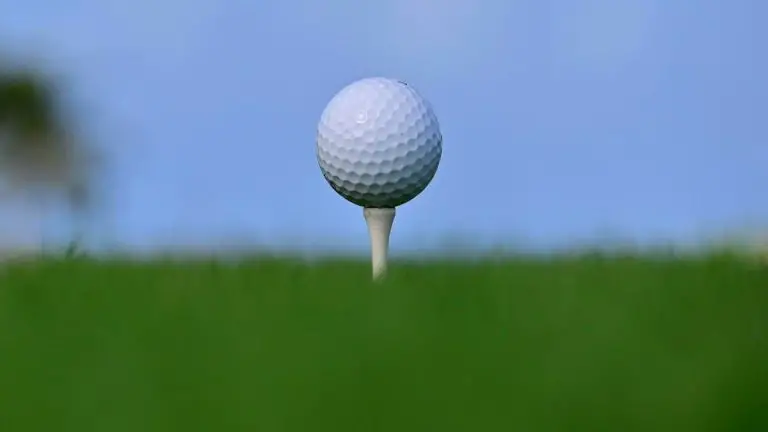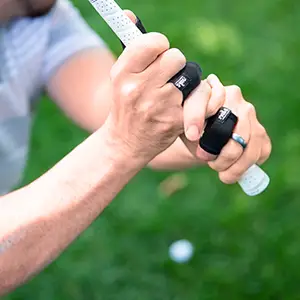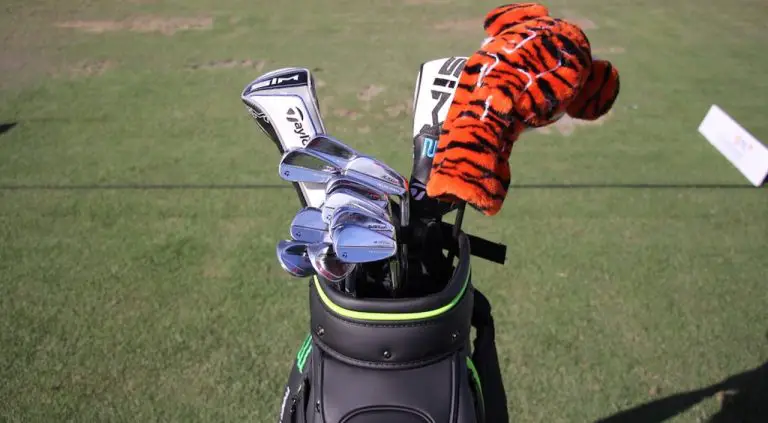How Do Pro Golfers Know Yardage

In the game of golf, precision and strategy are paramount. Every shot counts, and accurate distance assessment plays a vital role in the decision-making process of professional golfers. Have you ever wondered how pro golfers seem to know the exact yardage to their targets? How do they consistently hit shots that land within a few feet of the pin? The answer lies in their ability to accurately determine yardage.
In this insightful guide, we will delve into the techniques, tools, and expertise that professional golfers employ to assess yardage with precision. From the use of advanced equipment and the guidance of experienced caddies to the utilization of course mapping and the consideration of various factors, we will unravel the secrets behind how pro golfers know yardage.
Understanding the intricacies of yardage assessment provides valuable insights into the skills and strategies that separate elite golfers from the rest. By grasping the methods employed by professionals to gauge distances, recreational golfers can enhance their own game and make more informed decisions on the course.
So, let’s embark on a journey to uncover the secrets of how pro golfers accurately determine yardage. From the tee box to the green, prepare to unlock the knowledge that empowers golfers to hit their targets with precision and confidence.

The Importance of Yardage Knowledge in Professional Golf
Accurate yardage assessment plays a pivotal role in shot selection, club choice, and overall course management for professional golfers. The ability to gauge distances with precision allows golfers to make strategic decisions, adapt to varying conditions, and ultimately optimize their performance on the course. By having a deep understanding of yardage, pro golfers gain a competitive advantage over their opponents.
Equipment and Tools for Distance Assessment
Pro golfers rely on advanced equipment and tools to assist them in determining accurate yardages. These tools provide instant and precise measurements, allowing golfers to make informed decisions. Let’s explore some of the prominent equipment used in distance assessment:
Laser Rangefinders
Laser rangefinders are popular among professional golfers for their accuracy and ease of use. These handheld devices utilize laser technology to measure distances to specific targets on the course, such as flags or hazards. Golfers simply aim the rangefinder at the target, and the device calculates the yardage based on the time it takes for the laser beam to return.
GPS Devices
GPS (Global Positioning System) devices provide golfers with comprehensive course maps and accurate yardage information. These handheld devices or smartphone applications use satellite technology to determine the golfer’s position on the course and provide precise distances to various landmarks, hazards, and greens. Some GPS devices also offer additional features like shot tracking and statistics.
Utilizing laser rangefinders or GPS devices, pro golfers can quickly obtain accurate yardage readings, aiding them in club selection and shot execution.
Caddies: A Golfer’s Trusted Yardage Resource
Caddies play an integral role in assisting professional golfers with yardage assessment. Their experience, course knowledge, and ability to read conditions make them valuable assets on the course. Working closely with their caddies, pro golfers can benefit from their expertise in determining accurate yardages. Here’s how caddies contribute to distance assessment:
Course Knowledge and Experience
Caddies possess intricate knowledge of the golf course, including key landmarks, elevations, and prevailing wind patterns. They can provide golfers with valuable insights and recommendations based on their experience on the course. Caddies often collaborate with golfers to assess yardages, taking into account factors such as uphill or downhill slopes, uneven lies, and potential obstacles.
Wind and Weather Assessment
The ability to accurately gauge wind direction and speed is crucial for distance assessment. Caddies play a vital role in monitoring wind conditions and providing golfers with valuable information to adjust their yardage calculations accordingly. Wind can significantly impact the flight and carry of the golf ball, making it essential to make precise adjustments for optimal shot execution.
Golfers rely on their caddies’ guidance and expertise to accurately assess yardage in different situations, taking into account course-specific factors and environmental conditions.
Course Mapping and Yardage Books
Detailed course maps and yardage books are indispensable tools that professional golfers use to plan their shots and navigate the course strategically. These resources provide essential information on distances to various landmarks, hazards, and green complexes. Let’s explore how pro golfers utilize course mapping and yardage books:
Identifying Key Landmarks and Hazards
Course maps and yardage books highlight critical landmarks and hazards throughout the course. Professional golfers study these resources to familiarize themselves with the layout of the course and understand the yardages to specific targets. By knowing the distance to key landmarks, such as fairway bunkers or water hazards, golfers can make informed decisions on club selection and shot strategy.
Visualizing Hole Layouts and Shot Options
Course mapping and yardage books provide visual representations of each hole, including the positioning of tee boxes, fairways, and greens. Professional golfers use these visual aids to analyze different shot options, assess potential risks and rewards, and determine the optimal yardage for their intended shots. By visualizing the hole layout and considering factors such as doglegs and pin positions, golfers can strategize their approach to each hole effectively.
Noting Pin Placements and Green Complexes
Yardage books often include detailed information about pin placements on each green, allowing golfers to assess the distance to the flagstick from different positions on the course. By accurately gauging the yardage to the pin, golfers can select the appropriate club and aim for the best landing area on the green. Understanding the intricacies of the green complexes helps golfers plan their approach shots and make precise distance calculations.
Course mapping and yardage books serve as indispensable references that professional golfers consult during practice rounds and competitive play. By utilizing these resources, golfers gain valuable insights into the course layout and distances, enabling them to make calculated and strategic decisions on the course.
Factors Affecting Yardage Assessment
Several factors can influence yardage assessment in professional golf. It’s essential for golfers to consider these factors and make the necessary adjustments for accurate distance calculations. Let’s explore some of the key factors that impact yardage assessment:
Weather Conditions
Weather conditions, particularly wind speed and direction, play a significant role in determining yardages. A strong headwind can reduce the distance the golf ball travels, requiring golfers to adjust their club selection and aim for a longer yardage. Conversely, a tailwind can increase the ball’s carry distance, necessitating a club change to avoid overshooting the target. Professional golfers carefully assess wind conditions and make the appropriate yardage modifications to compensate for the impact of the wind.
Elevation Changes
Elevation changes on a golf course can affect shot distances, especially when encountering uphill or downhill slopes. When hitting uphill, the ball may not travel as far due to the increased resistance against gravity. Conversely, hitting downhill can add extra carry and roll to the shot, resulting in a longer distance. Pro golfers must factor in elevation changes when determining yardages, adjusting their calculations based on the severity and direction of the slope.
Temperature and Altitude
Temperature and altitude can also influence yardage assessments. Warmer temperatures tend to increase ball distance, as the air becomes less dense, allowing the ball to travel farther. In contrast, cooler temperatures can reduce ball distance due to increased air density. Similarly, playing at higher altitudes where the air is thinner can result in longer carry distances. Professional golfers consider these factors, along with wind and elevation, to accurately assess yardages under varying conditions.
By accounting for weather conditions, elevation changes, temperature, and altitude, pro golfers ensure precise yardage calculations, ultimately aiding their shot execution and overall performance on the golf course.
Practice, Experience, and Skill Development
Accurate yardage assessment is a skill that professional golfers develop through extensive practice, experience, and a deep understanding of their own game. Let’s explore how golfers refine their distance assessment skills:
Repetition and Feedback
Practice is essential for pro golfers to develop a sense of yardage. Through countless repetitions and feedback, golfers hone their ability to gauge distances accurately. By consistently hitting shots with specific clubs and noting the results, they develop a sense of how far they can hit the ball under different conditions. This repetitive practice helps golfers build muscle memory and improve their distance assessment skills over time.
Simulation and Practice Rounds
Simulation and practice rounds provide opportunities for golfers to assess yardages in a realistic on-course environment. Golfers may use simulators or practice rounds to replicate various playing conditions, including different courses, weather scenarios, and shot scenarios. By simulating real-game situations, golfers can fine-tune their distance assessment skills, adapt to varying conditions, and gain confidence in their yardage calculations.
Competitive Experience
Competing in tournaments and professional events exposes golfers to a wide range of course setups and challenges. The pressure of competition, coupled with the need for precise distance assessment, pushes golfers to refine their skills and make accurate yardage decisions under heightened intensity. Through the experience gained from competitive play, golfers become more adept at assessing yardages quickly and effectively.
Professional golfers also rely on their extensive knowledge of different courses and their past experiences on those courses. By understanding the characteristics of each hole, including distances to key targets, hazards, and potential landing areas, golfers can make informed decisions based on their prior knowledge and memory of the course.
Adaptation to Changing Conditions
In golf, conditions on the course are rarely consistent from one day to another or even from one hole to another. Professional golfers must adapt their yardage assessments to accommodate these changing conditions. Here are some ways golfers adapt their calculations:
Uneven Lies
Uneven lies, such as hitting from an uphill, downhill, or sidehill lie, can affect both the distance and the trajectory of the shot. Golfers need to make adjustments to their yardage assessments based on the slope and the anticipated ball flight resulting from the lie. By factoring in the lie and making the necessary adjustments, golfers can accurately gauge the yardage and select the appropriate club for the shot.
Unfamiliar Courses
When playing on unfamiliar courses, pro golfers rely on their ability to adapt quickly to new surroundings. They may use course guides, consult with their caddies, or study the layout during practice rounds to familiarize themselves with the distances to key targets. By adapting their yardage assessments to the specific course, golfers can make better-informed decisions and improve their performance on unfamiliar terrain.
Changing Wind Conditions
Wind conditions can vary significantly throughout a round, with gusts and shifts in direction presenting challenges for yardage assessment. Professional golfers continually assess wind conditions, taking into account both the overall direction and the strength of the wind. By adapting their yardage calculations based on the current wind conditions, golfers can adjust their shot strategies and club selections to compensate for the impact of the wind on the ball’s flight.
Utilizing Technology for Advanced Yardage Data
Advancements in technology have provided professional golfers with access to advanced yardage data and analysis. Let’s explore some of the technologies that assist golfers in their distance assessment:
Shot-Tracking Systems
Shot-tracking systems utilize sensors and GPS technology to capture data on each shot, including distance, ball flight, and landing position. This technology provides golfers with accurate information about their shot distances and shot dispersion patterns. By analyzing the data collected by shot-tracking systems, golfers can gain valuable insights into their performance and make data-driven decisions regarding yardage assessment and shot strategy.
Data Analytics
Data analytics platforms provide golfers with comprehensive statistical analysis, including historical yardage data, performance trends, and predictive models. Golfers can leverage these analytics tools to assess their strengths and weaknesses in distance assessment and identify areas for improvement.
These platforms can also offer comparative data, allowing golfers to benchmark their yardage assessments against other players or tour averages. By utilizing data analytics, professional golfers can gain a deeper understanding of their distance assessment capabilities and make informed adjustments to their game.
Virtual Reality and 3D Course Mapping
Virtual reality (VR) technology and 3D course mapping provide golfers with immersive experiences and detailed visual representations of golf courses. These technologies allow golfers to explore the course virtually, visualizing distances, hole layouts, and potential shot options. By utilizing VR and 3D course mapping, golfers can enhance their familiarity with different courses, improve their distance assessment skills, and make more confident decisions on the course.
As technology continues to evolve, we can expect further advancements in yardage assessment tools and data analysis, providing professional golfers with even more comprehensive and accurate information to aid their distance calculations.
Conclusion
Accurate yardage assessment is a critical skill that professional golfers develop through a combination of tools, experience, practice, and adaptation to changing conditions. By utilizing advanced equipment such as laser rangefinders and GPS devices, golfers can obtain precise measurements to aid in club selection and shot execution. The expertise and course knowledge of caddies further contribute to accurate distance assessment.
Course mapping and yardage books offer invaluable references for golfers, providing detailed information on key landmarks, hazards, and green complexes. Pro golfers also factor in various elements that affect yardage assessment, including weather conditions, elevation changes, and temperature.
Through practice, experience, and a deep understanding of their own game, golfers refine their distance assessment skills. They adapt their yardage calculations to account for uneven lies, unfamiliar courses, and changing wind conditions. Technological advancements, such as shot-tracking systems, data analytics, and virtual reality, further assist golfers in their distance assessment journey.
By continuously improving their yardage assessment abilities, professional golfers can make more precise and strategic decisions on the course, optimizing their performance and enhancing their chances of success.






